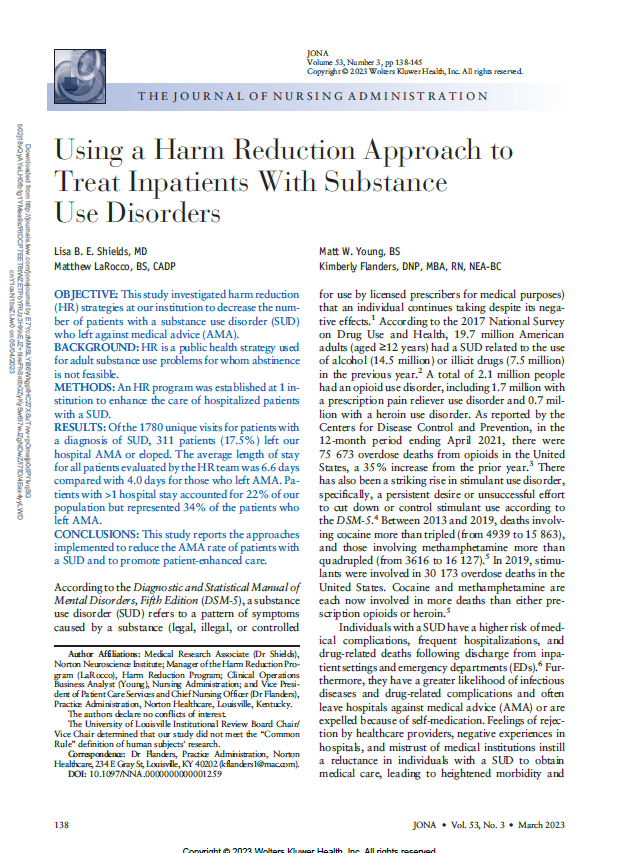Headline
A hospital-based harm reduction program achieved a low rate of patients with substance use disorder leaving against medical advice.
Context
As the drug overdose crisis related to opioid and stimulant use continues to rise to historic levels in the U.S., individuals with substance use disorder (SUD) are frequently hospitalized for drug use-related medical complications, but often leave hospitals against medical advice (AMA). Individuals with SUD experience a greater risk of drug-related death following hospital discharge. Nurses in hospital settings primarily treat the acute medical complications of substance use, but are often not involved in promoting harm reduction, which is a set of ideas and strategies aimed at reducing the negative consequences of drug use without necessarily reducing drug consumption. This study examines the implementation of a harm reduction program in an urban health system designed to align with the hospital’s other medical care and decrease the rate of AMA for patients with SUD.
Findings
The authors tracked discharge details and other data of patients with SUD who were admitted to the health system for medical causes, including infection from IV drug use, over the course of two years. The harm reduction program consisted of multiple components, including training for nurses on how to better understand patients with SUD, getting X-waiver training for physicians to start prescribing buprenorphine, and a three-member harm reduction team of addiction specialists. The harm reduction team evaluated patients regarding strategies for pain management and withdrawal avoidance and explored what positive behavior change the patient is willing to make. Overall, 17% of the patients in the study left AMA or eloped; and the average length of stay for people evaluated by the harm reduction team was greater than those who left AMA or eloped (7 days vs. 4 days). The findings also suggest a positive shift in staff attitudes toward accepting patients with SUD.
Takeaways
The reduction in patients leaving an inpatient setting AMA in this study is promising for continued integration of harm reduction approaches across health systems. Patients with SUD who are hospitalized place themselves at risk for unintentional overdose if they self-inject/use drugs. In addition, behavior issues related to drug use can put hospitalized patients with SUD and staff at risk of harm, as well as contribute to staff burnout.



